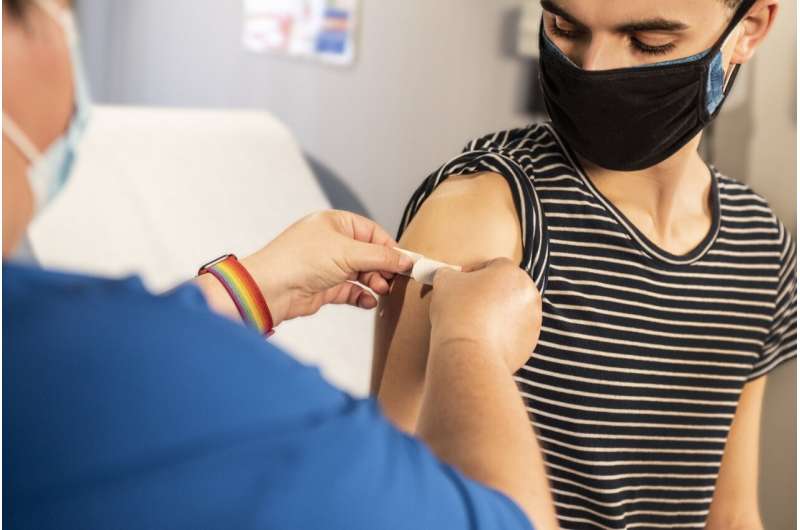This article has been reviewed according to Science X's editorial process and policies. Editors have highlighted the following attributes while ensuring the content's credibility:
fact-checked
peer-reviewed publication
trusted source
proofread
Comprehensive strategy results in nearly 20% boost in adolescent HPV vaccination rates

Mayo Clinic researchers demonstrated a nearly 20% increase in human papillomavirus (HPV) vaccination rates among adolescents through a combination intervention approach, a new Mayo Clinic study finds. The strategy involved mailing reminders to parents about their child's eligibility for the HPV vaccine and simultaneously giving health care providers feedback about successful HPV vaccine administration among the patients they had recently seen.
The findings, published in JAMA Pediatrics, suggest health care practices could adopt this evidence-based approach to boost HPV vaccination uptake in 11- and 12-year-olds.
"HPV vaccine uptake at 60% of eligible adolescents falls short of national public health goals and lags other adolescent vaccines," says Robert Jacobson, M.D., a pediatrician in the Mayo Clinic Division of Community Pediatric and Adolescent Medicine. Dr. Jacobson is a co-principal investigator of the study.
Human papillomaviruses cause viral infections transmitted sexually through skin-to-skin contact. HPV infections may occur without symptoms or signs in late adolescence or early adulthood and affect both males and females. The virus can cause several types of cancers, including of the cervix, anus, genital area, mouth and throat.
The Centers for Disease Control and Prevention (CDC) estimates 37,000 HPV-linked cancers occur each year in the U.S., all of which may be prevented by the HPV vaccination.
For the study, the researchers evaluated their intervention strategy at six Mayo Clinic primary care practices in Southeastern Minnesota. The investigation involved 9,242 adolescents who were due to receive at least one dose of the HPV vaccine. When parents received reminders in the mail and providers were simultaneously given feedback, 39.7% of patients got their doses due in the months that followed the interventions, as contrasted to 21.9% without the interventions.
"Our study investigated both parent- and provider-facing interventions. By targeting parents and providers, we achieved much higher improvements in HPV vaccine uptake than the use of these strategies in isolation," says Lila Finney Rutten, Ph.D., lead author and chair of the Mayo Clinic Division of Epidemiology.
The researchers say the study not only addresses the low HPV vaccination rate but also holds the potential to reshape other public health and vaccination campaigns.
More information: Lila J. Finney Rutten et al, Multilevel Implementation Strategies for Adolescent Human Papillomavirus Vaccine Uptake, JAMA Pediatrics (2023). DOI: 10.1001/jamapediatrics.2023.4932



















